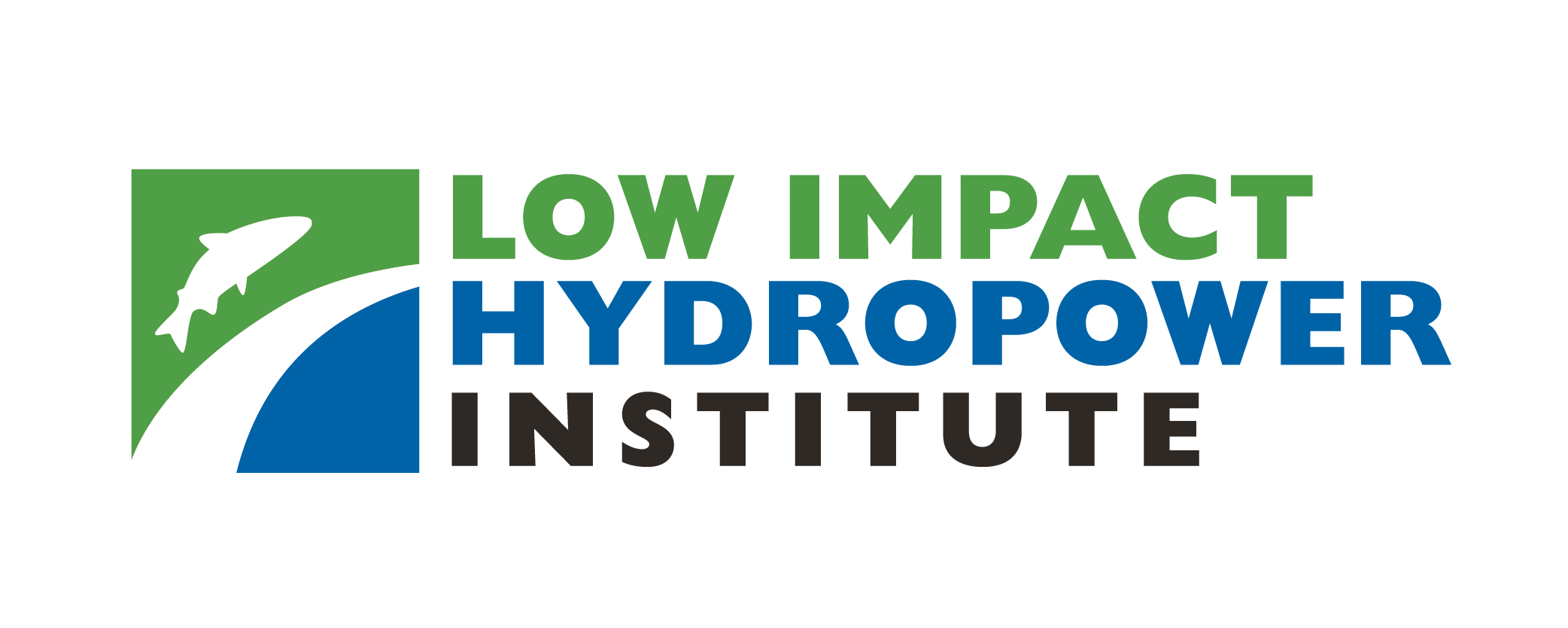LIHI 證書 #8 - 華盛頓州尼斯誇利項目

| 項目名稱 | 尼斯誇利 |
| 理海證書編號 | 8 |
| LIHI 證書期限 | 2018年4月15日 – 2028年4月14日 |
| 擁有者 | 塔科馬市 |
| 狀態 | 華盛頓 |
| 地點 | 位於華盛頓州皮爾斯縣、瑟斯頓縣和劉易斯縣尼斯誇利河 42.5 英里和 44.2 英里之間。 |
| 裝置容量 | 總計:116.6 兆瓦 阿爾德:52.6兆瓦 拉格蘭德:64兆瓦 |
| 平均年發電量 | 總計:530,851 兆瓦時
阿爾德:202,660 兆瓦時 |
| 設施類型 | 拉格蘭德: 徑流 阿爾德: 尖峰 |
| 聯邦能源監管委員會 不。 | P-1862 於 1997 年簽發,效期至 2037 年 2 月 28 日 |
尼斯誇利計畫位於華盛頓州西南部的尼斯誇利河上,橫跨皮爾斯、瑟斯頓和劉易斯三個縣。尼斯誇利河發源於雷尼爾山的尼斯誇利冰川,向西流向普吉特海灣約 80 英里。此計畫部分位於貝克山-斯諾誇米國家森林。該項目由兩個設施組成,即 LaGrande 開發項目和 Alder 壩 發展。拉格蘭德 (LaGrande) 開發案於 1912 年竣工並開始運營,阿爾德大壩 (Alder Dam) 於 1945 年竣工並開始運營。
計畫所有者與州和聯邦機構以及尼斯誇利部落保持積極合作,共同管理尼斯誇利河。 1978 年,尼斯誇利河協調委員會 (NRCC) 成立。該委員會由森特勒利亞市、尼斯誇利部落、華盛頓州魚類和野生動物部 (WDFW)、國家海洋漁業局 (NMFS)、美國魚類和野生動物管理局 (USFWS) 組成。專案擁有者在繼續實施其目前的 FERC 許可證時,會定期與 NRCC 進行磋商。
該項目包括兩座水力發電設施。每個設施包括一個 壩、儲層、出油管線、 發電站以及相關的輸電開關站。
阿爾德水電廠包括一座 285 英尺高的混凝土拱壩,用於攔截阿爾德湖的水。阿爾德湖是一個長 7.4 英里的蓄水水庫,最大水面積為 3,065 英畝。主壩結構附近有一座鋼筋混凝土 溢洪道 總排水量為每秒 80,000 立方英尺 (cfs) 的河道。阿爾德發電站位於大壩底部。電站安裝兩台發電機組,裝置容量52.6兆瓦。
拉格蘭德設施由一座 192 英尺高的混凝土 重力壩 蓄水拉格蘭德水庫,水面面積為 45 英畝。拉格蘭德水庫位於一個深而陡峭的峽谷中,延伸至阿爾德大壩底部 1.5 英里。拉格蘭德大壩擁有一座大型鋼筋混凝土溢洪道,洩洪能力為 80,000 立方英尺/秒。
大壩將水流引入一條 6,400 英尺長的地下隧道,該隧道終止於一座鋼 壓力水管 形成一個多方面的結構,服務五個獨立的 壓力管道 拉格蘭德發電站的五個發電機組均有安裝。總裝置容量為64兆瓦。 1.7 英里長的拉格蘭德繞行河段位於拉格蘭德大壩和拉格蘭德發電廠之間的深峽谷中。
專案開發以不同的模式運作。 Alder 工廠作為 達到峰值 項目和拉格蘭德工廠在 徑流 模式,傳遞來自 Alder 水庫的所有流入水。阿爾德設施也提供儲存服務,以支援下游夏末的關鍵流量。此外,拉格蘭德水庫的水流透過從拉格蘭德水庫深處引入冷水來提高水溫,從而為下游的鮭魚提供生存空間。該計畫向繞過的河段持續提供 30 立方英尺/秒的水流,以改善鮭魚的養殖和產卵棲息地。該流動制度由 NRCC 開發,旨在改善河流流量和水生棲息地。
項目範圍內的水域被指定用於支持所有水生生物用途、主要接觸娛樂、供水和美學。尼斯誇利河口因水溫升高而被列為受損區域。華盛頓州生態部門得出的結論是,該計畫不會造成損害,因為深水庫有助於向下游受損河段供應冷水。即使在積雪較少的年份,該計畫也能透過從阿爾德水庫釋放冷水來緩解水溫升高的問題。這為鮭魚和其他水生物種提供了合適的棲息地,否則它們可能會受到水溫升高的影響。此項緩解措施由 NRCC 決定,NRCC 在 2015-2016 年期間經常召開會議,以確保適當的水質管理。
歷史上,河流中的幾道天然屏障阻礙了洄游魚類的上游通道。這些障礙主要是自然瀑布和小瀑布,阻礙了人們進入計畫的上游。華盛頓魚類和野生動物部和自然資源保護委員會進行的調查得出的結論是,有限的適宜棲息地以及天然屏障限制了上游通道設施的需求。同樣,下游通道也被天然屏障阻擋,導致計畫上游和下游的魚類族群分離。計畫下游發現的物種因計畫流量增加而得到支持,上述溫度緩解措施進一步支持了魚類族群和棲息地。下游物種包括大馬哈魚、銀鮭、粉紅鮭、虹鱒和割喉鱒。在阿爾德水庫發現的魚類包括紅鮭、虹鱒、割喉鱒、大口黑鱸和小口黑鱸、黃鱸、黑白莓鱸和斑點叉尾鯰。
本計畫土地面積約7,600英畝。其中包括項目業主獲得並保留的 3,350 多英畝土地,指定為尼斯誇利野生動物管理區。我們與 WDFW、USFWS 和 Nisqually 部落協商制定了野生動物管理計劃,以保護、緩解和改善項目周圍的海岸線。該計劃包括管理區域內地塊的描述、野生動物棲息地管理的規定、措施的有效性監測和評估,以及修訂計劃和實施措施的時間表。專案業主每年都會準備一份年度報告,其中包含上一年發生的計劃措施和活動的狀態。計畫業主與南普吉特海灣鮭魚增殖小組和尼斯誇利印第安部落合作,免費提供水庫清理作業中產生的大型木質碎片 (LWD),用於馬舍爾河和奧霍普溪的修復項目,這兩條重要的鮭魚支流是計畫下游尼斯誇利河的下游河段。計畫業主也與尼斯誇利印第安部落合作,資助在 87 英畝的土地上種植針葉樹。 河岸 野生動物棲息地。六年來,每年的種植面積約為 15 英畝。這些植物旨在為尼斯誇利河未來引進 LWD 提供來源,幫助維護和改善魚類棲息地。隨著這些針葉林下植物的生長和成熟,它們也增加了棲息地的多樣性,為各種陸地物種帶來了長期利益。
計畫附近可能存在的受威脅或瀕危物種包括大鱗大麻哈魚、虹鱒、灰狼、灰熊、北斑貓頭鷹和大理石海鳩。在計畫區域內發現的唯一物種是大馬哈魚和虹鱒。儘管所有合適的陸地棲息地都受到上述項目野生動物管理計劃的保護,但在項目區域內或附近沒有觀察到其他列出的物種。該計畫提供最低流量以支持下游鮭魚棲息地,並提供 LWD 用於尼斯誇利河支流的修復計畫。
專案所有者已與國家歷史保護辦公室 (SHPO) 協商,以確定專案區域內是否可以找到任何文化或歷史資源。 SHPO 的結論是,目前在計畫土地上沒有已知的史前文化資源遺址、歷史建築或結構。專案業主在進行任何地面擾動活動之前都會與 SHPO 進行協商。
該項目的娛樂資源包括阿爾德水庫的非機動車道。為了娛樂目的,可以在水庫中放養紅鮭,所有正式的娛樂設施都位於阿爾德水庫中。其餘工程區域因相對偏僻、地勢陡峭,民眾不易進入。在安全的地方,公眾可以免費進入。
合規狀態
目前證書中沒有針對設施的具體條件
2024: 未發現重大變更或合規問題。根據年度審查,該項目仍符合規定。
2023: 未發現重大變更或合規問題。根據年度審查,該項目仍符合規定。
2022: 未發現重大變更或合規問題。根據年度審查,該項目仍符合規定。
2021: 沒有報告變更或合規問題。根據年度審查,該項目仍符合規定。
2020: 沒有報告變更或合規問題。根據年度審查,該項目仍符合規定。
2019: 沒有報告變更或合規問題。根據年度審查,該項目仍符合規定。
2018: 目前證書的年度報告尚未生效。
認證歷史
2022 年 1 月 1 日: 根據 2022 年 1 月 1 日發布的 LIHI 第二版認證手冊第 2.05 版,LIHI 證書期限已延長。
2019年8月8日: 重新認證尼斯誇利水力發電計畫的決定是最終決定。申訴期於 2019 年 5 月 11 日結束,未收到任何申訴。此計畫的認證期限為 2018 年 4 月 15 日至 2023 年 4 月 14 日。
2019年4月10日: 低影響水力發電研究所 (LIHI) 初步批准尼斯誇利河水力發電計畫獲得低影響認證,LIHI 證書 #8,新期限為 5 年。
該決定是初步決定,需等待 30 天的上訴期。只有在 60 天的評論期內對初始申請發表評論的人才有資格提出上訴。此類上訴需要包括有關該項目為何不符合 LIHI 標準的解釋。申訴請求可以透過電子郵件發送至 評論@lowimpactHydro.org 請在主旨欄註明“尼斯誇利水力發電計畫”,或郵寄至低影響水力發電研究所,地址:329 Massachusetts Ave, Suite 6, Lexington, MA 02420。所有請求都將發佈在網站上。申請人將有機會回應,任何回應也將被公佈。 請求必須在 2019 年 5 月 11 日美國東部時間下午 5 點之前收到。 完整的申請和審閱者報告如下。
2018年12月10日: 低影響水力發電研究所已收到尼斯誇利水力發電計畫低影響重新認證的完整申請。 LIHI 正在就此申請徵求公眾意見。具體來說,我們想知道您是否認為該項目符合第二版手冊中修訂的 LIHI 低影響認證標準。請查看 LIHI 修訂版中的計劃和標準 手冊 然後查看下面該項目的申請資料。與特定 LIHI 標準(流量、水質、 魚道等等)將非常有幫助,但所有評論都會被考慮。意見可以透過電子郵件提交給研究所 評論@lowimpactHydro.org 請在主旨欄註明“Nisqually 專案評論”,或郵寄至低影響水電研究所,地址:329 Massachusetts Avenue, Suite 2, Lexington, MA 02420。 評論必須在 2019 年 2 月 8 日美國東部時間下午 5 點之前收到 予以考慮。所有評論都將發佈到網站上,申請人將有機會回應。任何回應也將被發布。
2014年3月12日: 塔科馬市尼斯誇利河水力發電計畫已獲得第三個五年期低影響認證。認證生效日期為2013年4月15日,有效期限至2018年4月15日。
2013年5月15日: LIHI 已收到尼斯誇利河水力發電計畫重新認證的申請。該應用程式可以在下面的“文件”部分找到。
2008年8月28日: 尼斯誇利河水力發電計畫已獲得第二個五年低影響認證,因為它繼續滿足 LIHI 的所有八項嚴格環境標準,涉及河流流量、水質、魚類通道和保護、流域健康、瀕危物種保護、文化資源、娛樂用途和通道,以及是否建議拆除大壩本身。
2008年4月19日: 低影響水力發電研究所已收到位於華盛頓尼斯誇利河的尼斯誇利河水力發電計畫的重新認證申請。
2003年9月17日: 尼斯誇利河水力發電計畫已被認證為低影響水力發電項目,有效期為五年,自 2003 年 4 月 15 日起生效,至 2008 年 4 月 15 日止。這是華盛頓州第三個獲得 LIHI 認證的水力發電設施,也是全國第八個獲得此認證的水力發電設施。
